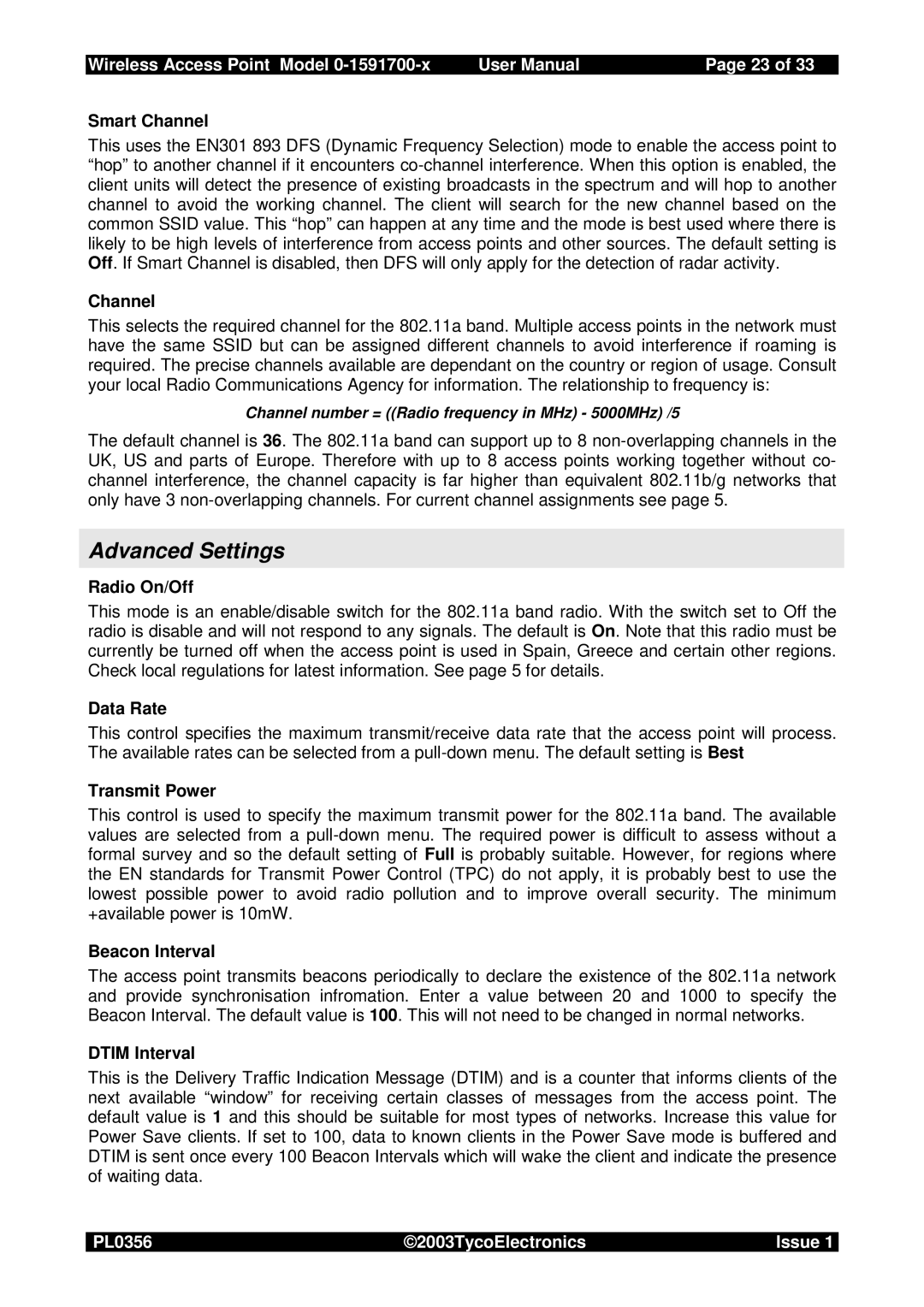Wireless Access Point Model | User Manual | Page 23 of 33 |
Smart Channel
This uses the EN301 893 DFS (Dynamic Frequency Selection) mode to enable the access point to “hop” to another channel if it encounters
Channel
This selects the required channel for the 802.11a band. Multiple access points in the network must have the same SSID but can be assigned different channels to avoid interference if roaming is required. The precise channels available are dependant on the country or region of usage. Consult your local Radio Communications Agency for information. The relationship to frequency is:
Channel number = ((Radio frequency in MHz) - 5000MHz) /5
The default channel is 36. The 802.11a band can support up to 8
Advanced Settings
Radio On/Off
This mode is an enable/disable switch for the 802.11a band radio. With the switch set to Off the radio is disable and will not respond to any signals. The default is On. Note that this radio must be currently be turned off when the access point is used in Spain, Greece and certain other regions. Check local regulations for latest information. See page 5 for details.
Data Rate
This control specifies the maximum transmit/receive data rate that the access point will process. The available rates can be selected from a
Transmit Power
This control is used to specify the maximum transmit power for the 802.11a band. The available values are selected from a
Beacon Interval
The access point transmits beacons periodically to declare the existence of the 802.11a network and provide synchronisation infromation. Enter a value between 20 and 1000 to specify the Beacon Interval. The default value is 100. This will not need to be changed in normal networks.
DTIM Interval
This is the Delivery Traffic Indication Message (DTIM) and is a counter that informs clients of the next available “window” for receiving certain classes of messages from the access point. The default value is 1 and this should be suitable for most types of networks. Increase this value for Power Save clients. If set to 100, data to known clients in the Power Save mode is buffered and DTIM is sent once every 100 Beacon Intervals which will wake the client and indicate the presence of waiting data.
PL0356 | ©2003TycoElectronics | Issue 1 |
